
Guide to the Colombian Peso: Value, Coins, Bills, and Their Meaning
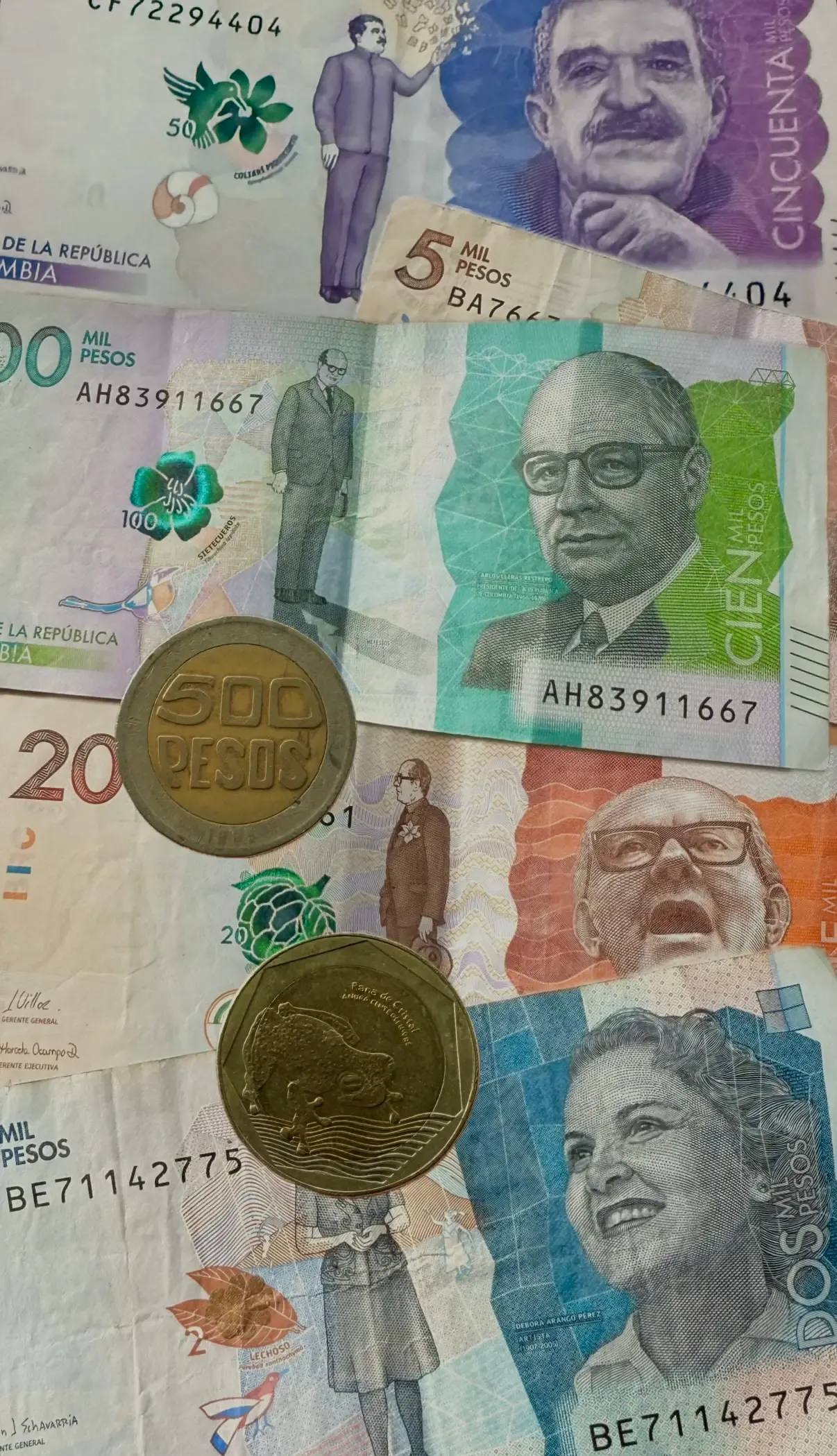
The Colombian peso (COP) has been the official currency of Colombia since 1810. Throughout its history, it has undergone transformations in design and value that reflect the country’s cultural essence and milestones. If you’re preparing your adventure through Colombia, this guide will help you easily recognize its coins and bills, making your daily transactions simpler.
If you’re coming from Europe or the United States, you’ll enjoy an advantage thanks to the current favorable exchange rate of the Colombian peso:
- EURO → COP: 1 € = 4,468.00 COP
- DOLLAR → COP: 1 $ = 3,846.15 COP
Fun Facts About the Colombian Peso
Colombia is brimming with history, and its currency is no exception. Here are some interesting facts about the Colombian peso:
- The Colombian peso has historically been linked to various international currencies: the French franc (1871–1903), the British pound sterling (1903–1931), and the U.S. dollar (1931–1949).
- Although Colombia abandoned the gold standard in 1931, bills continued to bear the term “pesos oro” (gold pesos) until 1993.
- The highest-denomination bill, 100,000 pesos (equivalent to €22.51 or $25.97), pays tribute to poet José Asunción Silva, while the 50,000-peso note (€11.26 or $12.98) honors Nobel Prize winner and writer Gabriel García Márquez.
- In everyday Colombian slang, the 1,000-peso bill is known as “la luca,” and money in general is referred to as “lucas” or “plata.”
- The Banco de la República, responsible for issuing the currency, hosts in Bogotá a museum dedicated to bills and coins, displaying unique historical and collectible pieces.
Colombian Coins in Detail
In Colombia, there are five main types of coins in circulation. Below are their values converted to euros and dollars at the time of this blog’s publication:
- 50-peso coin: €0.011 / $0.013
- 100-peso coin: €0.022 / $0.026
- 200-peso coin: €0.045 / $0.052
- 500-peso coin: €0.11 / $0.13
- 1,000-peso coin: €0.22 / $0.26
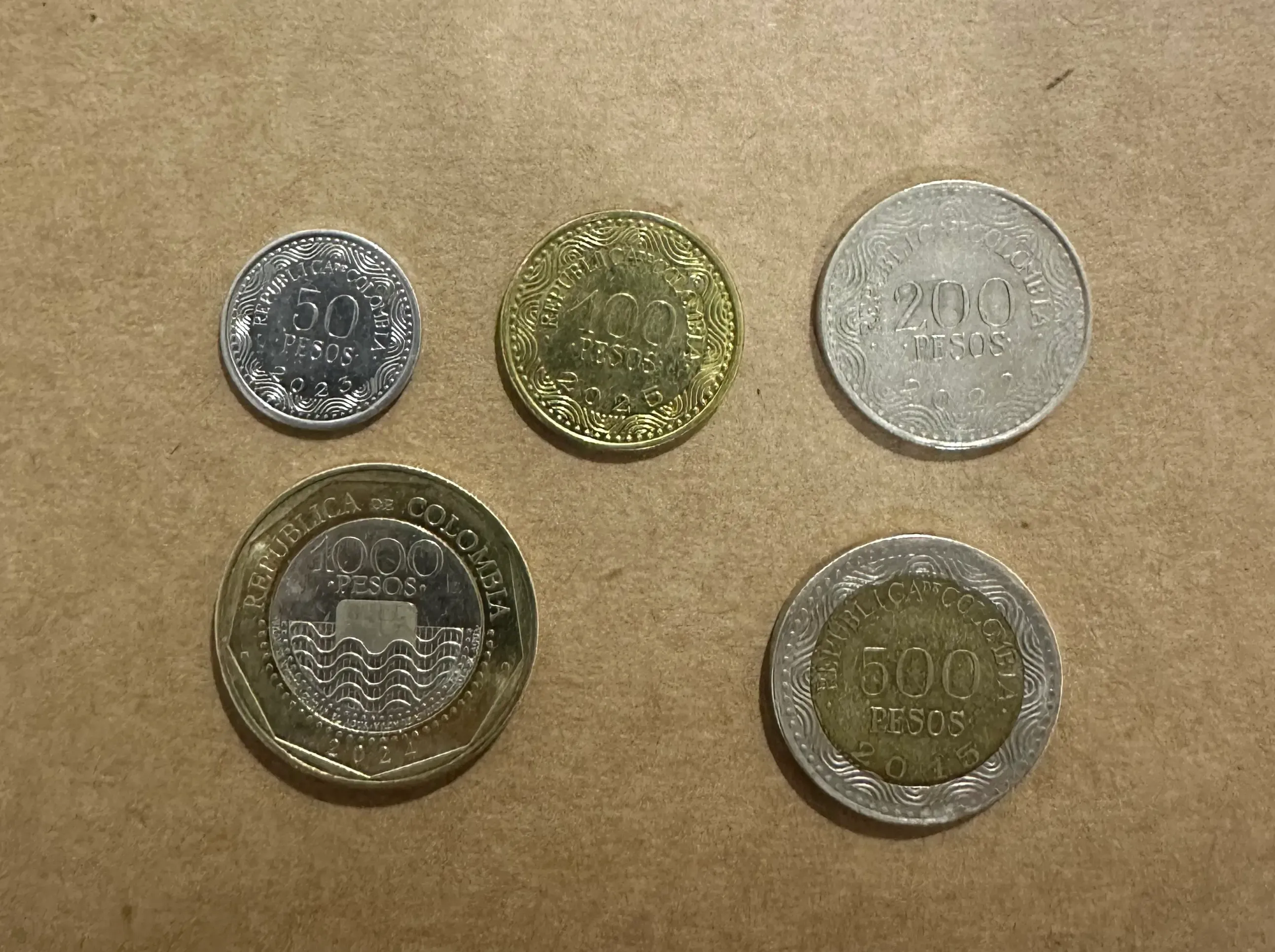
Colombian Bills: Designs and Meanings
The Colombian currency includes six denominations of bills, each featuring a design that celebrates the nation’s biodiversity, culture, and iconic figures.
2,000 Colombian Peso Banknote
Dominated by the color blue. 🔵
On the front, artist Débora Arango appears alongside the leaves and fruit of the milk tree and a cardinal bird.
The back evokes the magic of Caño Cristales, the “river of five colors,” with birds flying over the treetops.
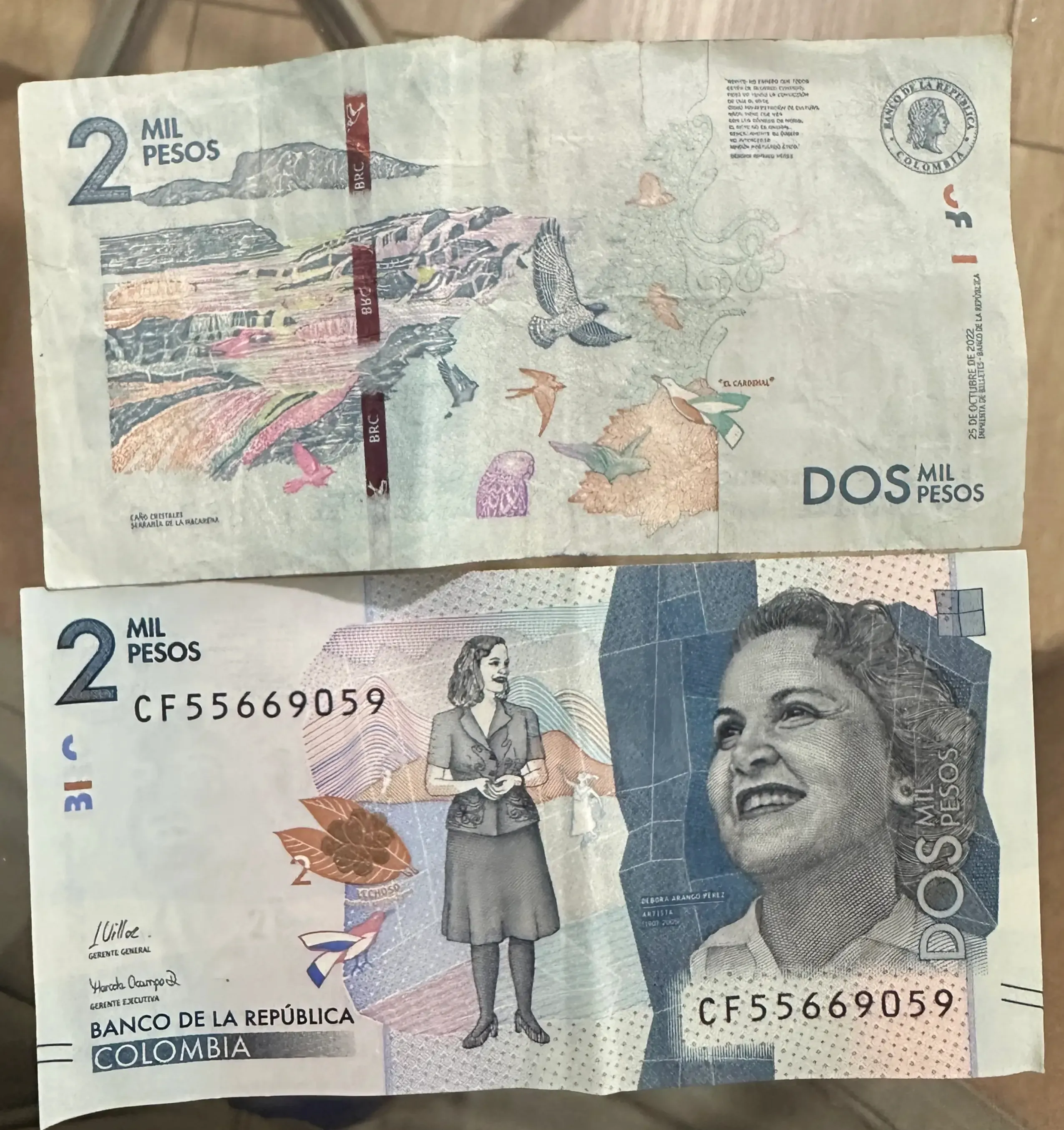
5,000 Colombian Peso Banknote
Dominated by brown tones. 🟤
On the front, poet José Asunción Silva appears beside a puya plant and a bumblebee.
The back captures the majesty of the Colombian páramos, with the spectacled bear, the Andean condor, and an excerpt from Silva’s poem Melancolía.

10,000 Colombian Peso Banknote
Characterized by red hues. 🔴
The front honors anthropologist Virginia Gutiérrez, flanked by a tree frog and the impressive Victoria regia flower.
The back illustrates the Amazon region, where a river transforms into a serpent on the horizon, featuring a fisherman in a canoe and various animal species bringing the ecosystem to life.
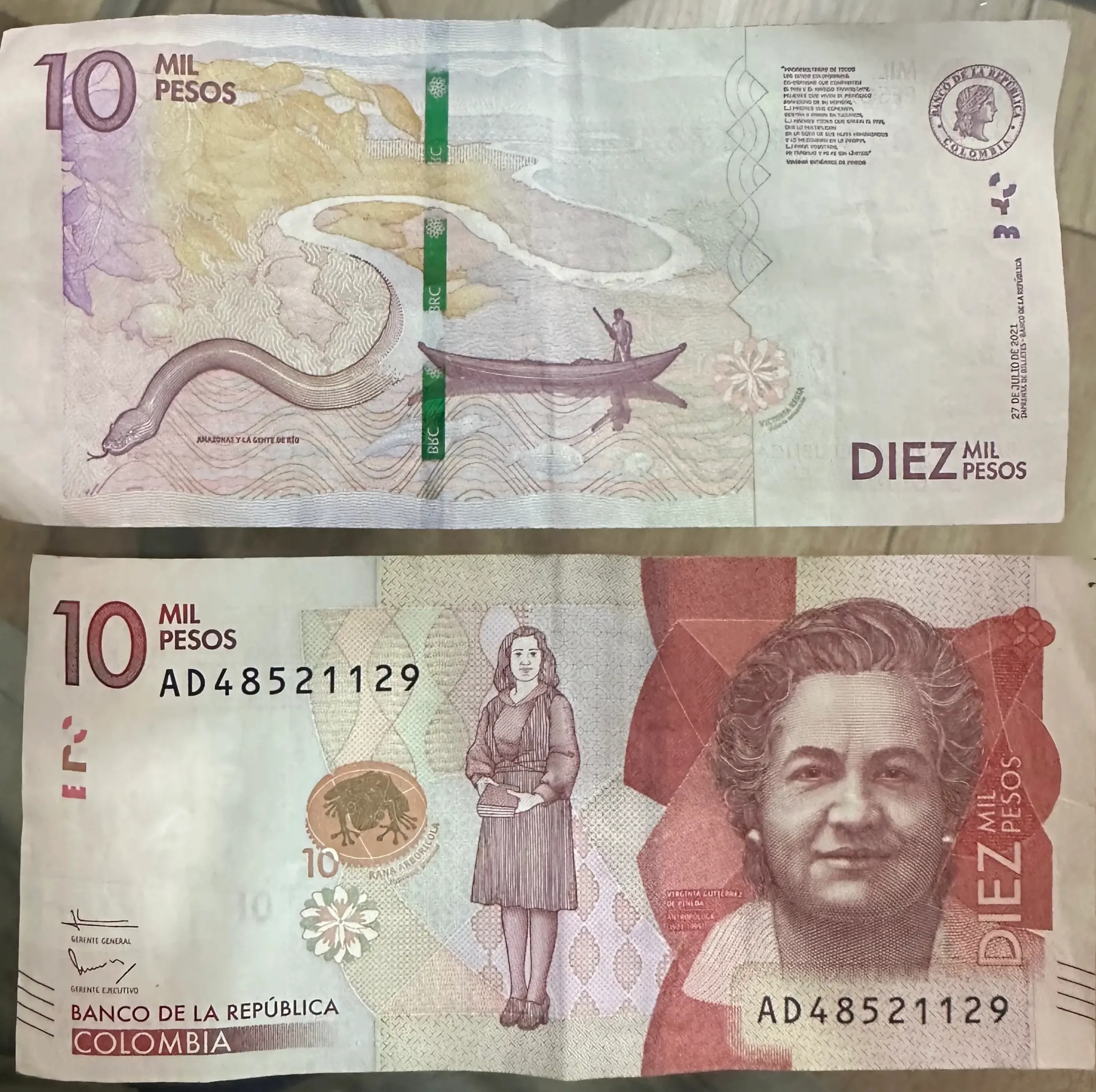
20,000 Colombian Peso Banknote
The main color is orange. 🟠
Like the 50,000 and 100,000 peso bills, this note honors national symbols and figures established by law. It commemorates former President Alfonso López Michelsen and the sombrero vueltiao.
On the front, the portrait of President López Michelsen (1974–1978) appears, in compliance with Law 1599 of 2012.
The back highlights the sombrero vueltiao, as per Article 2 of Law 908 of 2004, alongside the channels of La Mojana and the fruit of the anón tree.
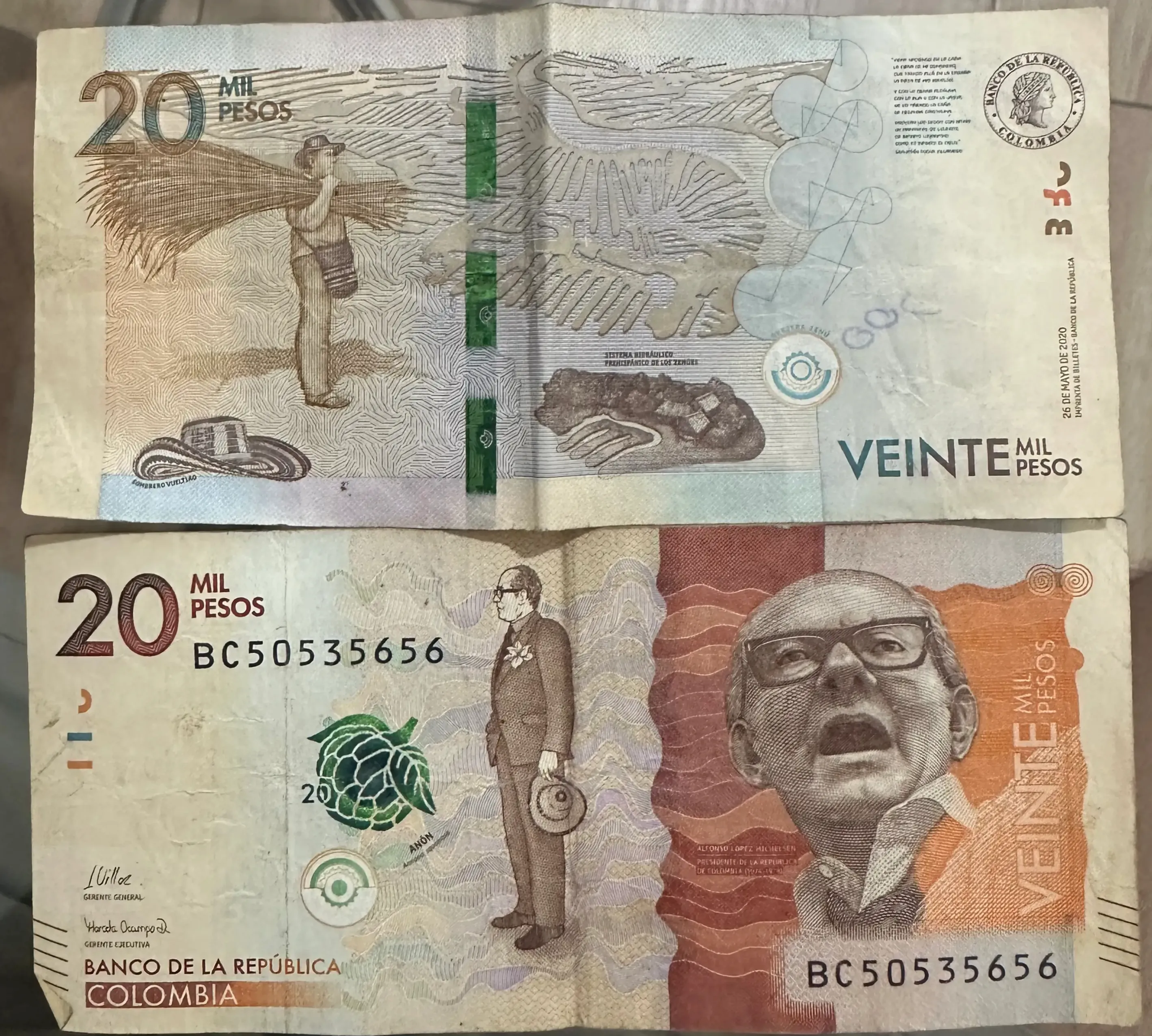
50,000 Colombian Peso Banknote
Highlighted in violet. 🟣
This note honors Nobel laureate Gabriel García Márquez, according to Article 5 of Law 1741 of 2014 of the Congress of the Republic. It also depicts the terraces of Ciudad Perdida and scenes of the indigenous Tayrona culture in their traditional homes.

100,000 Colombian Peso Banknote
Green is its emblematic color. 🟢
On the front appears President Carlos Lleras Restrepo (in accordance with Article 10 of Law 1167 of 2007), accompanied by the barranquero bird and the sietecueros flower.
The back showcases the Cocora Valley in Quindío, featuring the iconic wax palm, Colombia’s national tree.
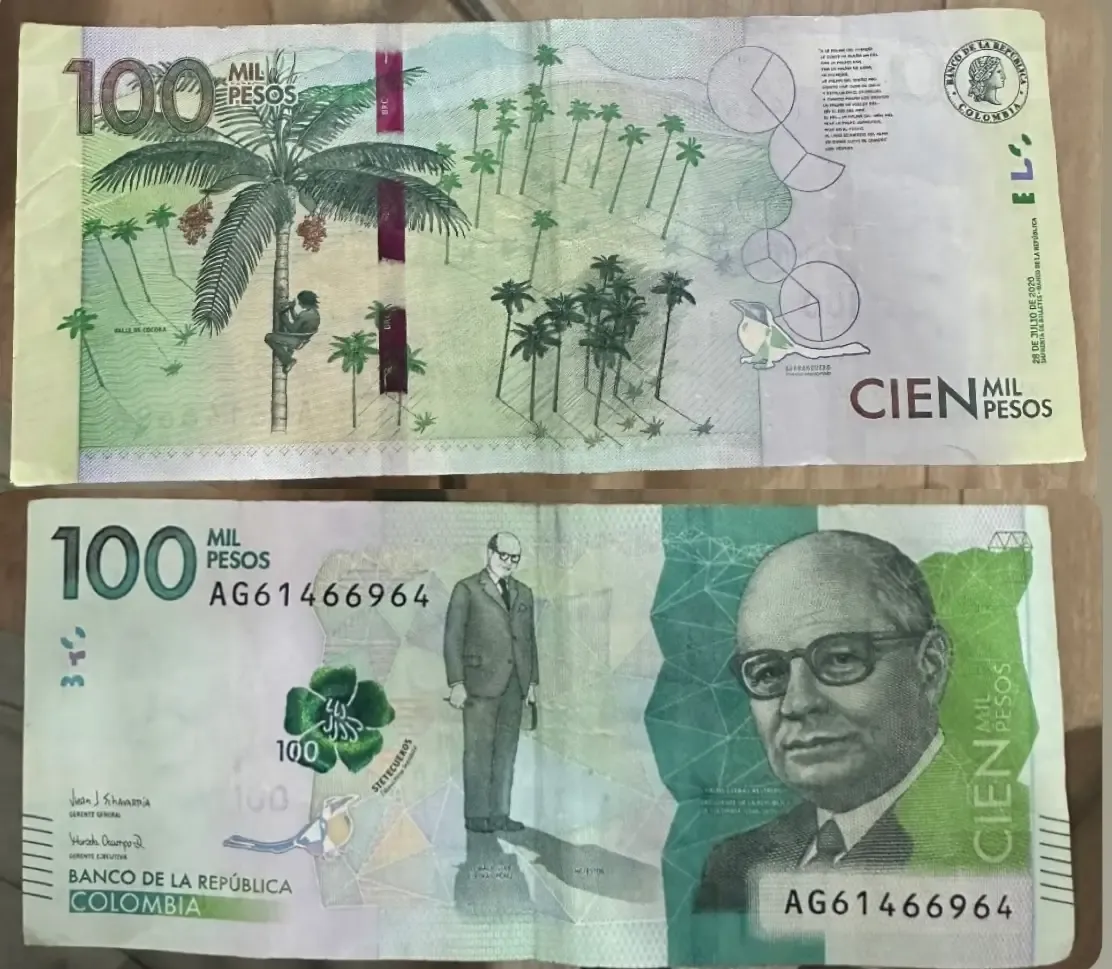
Practical Tips for Exchanging Money in Colombia
Whether you’re planning your trip to Colombia or already exploring its streets, these tips will ensure safe and efficient transactions:
- Always exchange money at official locations like malls or airports; avoid street offers.
- Use neobanks such as Revolut or Wise for conversions and international payments; they allow ATM withdrawals with minimal fees.
- Carry your identification documents whenever you exchange money.
- Check the exchange rate online before confirming any transaction.
- Count the money received as many times as needed and familiarize yourself with the notes to avoid confusion, especially with high denominations.
Your trip through Colombia is bound to be unforgettable — stay alert to avoid being “given papaya” (a Colombian expression meaning don’t make yourself an easy target), and immerse yourself in its wonders.
If you’re a collector of international bills, you’ll love Colombian designs for their beauty and cultural depth.
Check out our TikTok dedicated to Colombian bills and coins for a dynamic look!
To learn more about the Colombian peso, visit the official page of the Banco de la República de Colombia, where you’ll find detailed information about its history and features.

